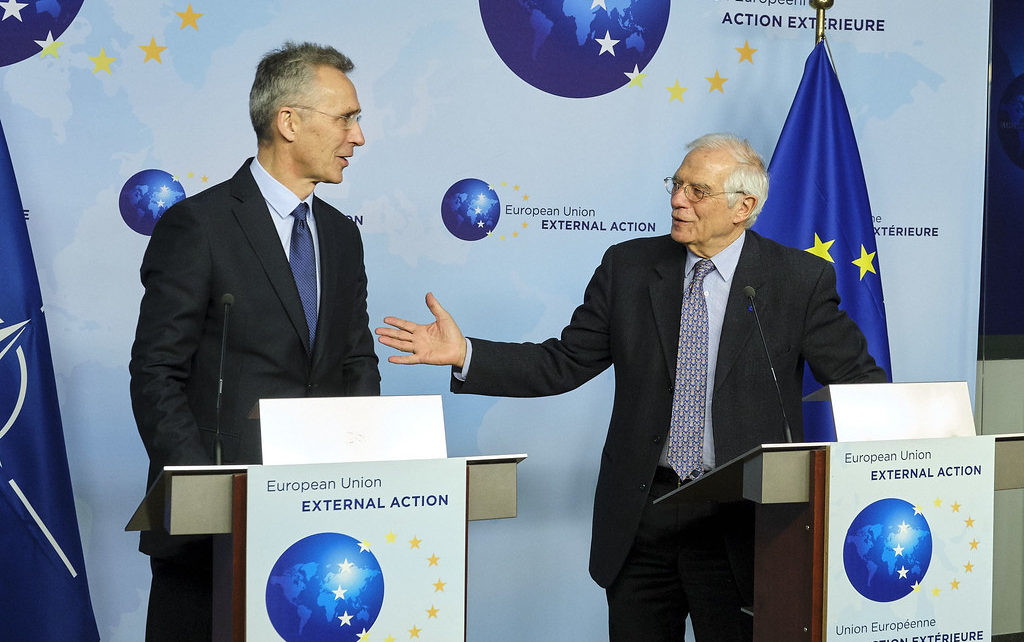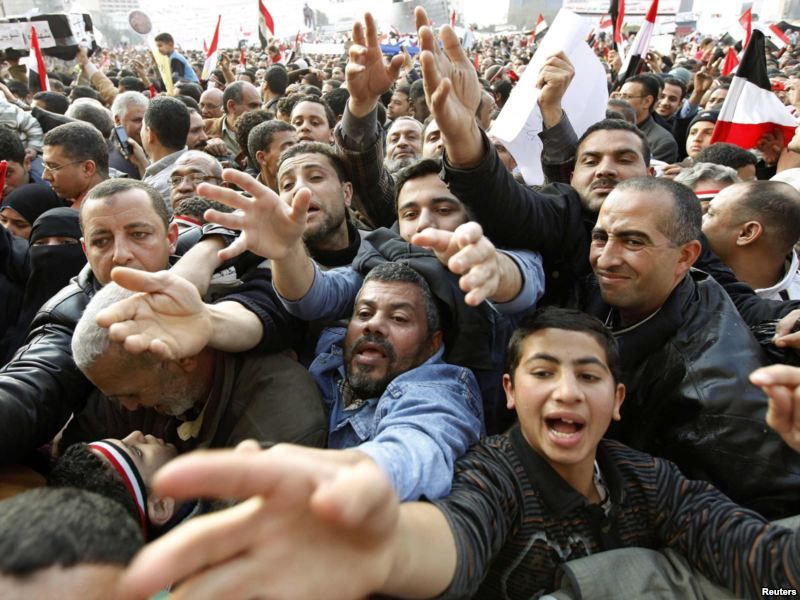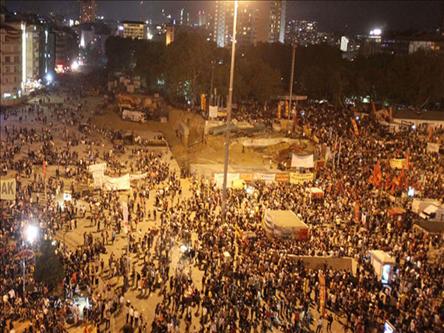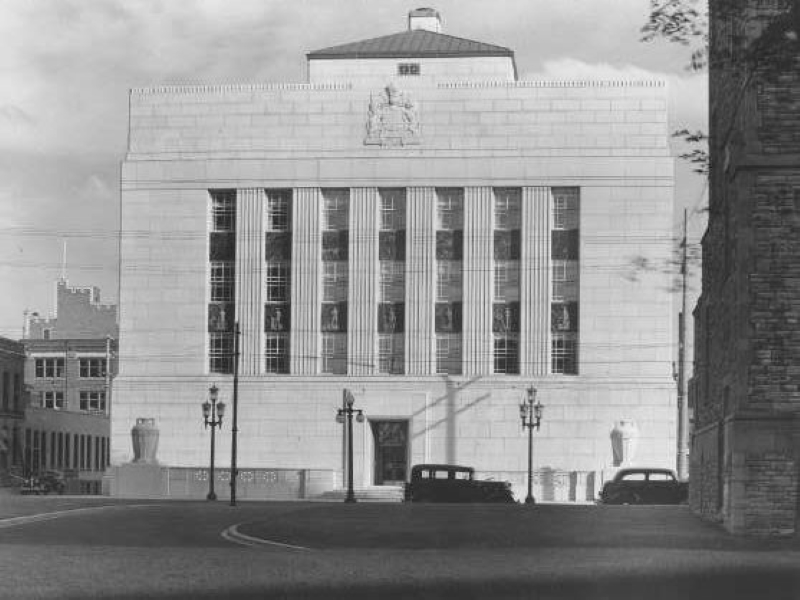Russia’s invasion of Ukraine has created an existential crisis for European security and demanded greater European strategic responsibility. Currently, European NATO members and the EU are on a mission to decouple from energy dependence on Russia. They are also committed to recapitalizing their armed forces. How these multi-billion-dollar investments are spent will be critical to deterring future Russian adventurism.
Since Russia’s illegal annexation of Crimea in 2014 and the continued arming of Ukrainian separatists, most European allies and the EU have focused on improving operational readiness, investing in R&D, and procuring equipment and materiel. However, although collective defence expenditure in Europe has risen, the results of spending are not commensurate for Europe and Russia when defence procurement cycles and R&D investments are compared. If deterrence, capabilities, and readiness were only measured through real monies spent, European allies would trump Russia. The EU members reached $225 billion in 2020, and NATO European allies (not including Turkey) were $324 billion in 2021, compared to Russia’s $61.7 billion defence budget in 2020.
However, comparing Russia’s military spending to Europe’s in $USD and prevailing exchange rates is not an accurate assessment of capabilities and procurement cycles. If measured by purchasing power parity (PPP), Russia’s defence budget ranges from $150-200 billion. This is important, as Moscow pays its domestic manufacturers in roubles, and since 2002 Russia has maintained consistent and large-scale state armaments programmes (SAP), investing at much higher rates in domestic new capabilities, procurement, materiel, and R&D. In 2010, SAP-2020 outlined a goal to achieve a 30% share of modern equipment by 2015 and 70% by 2020 with the allocation of $626 billion over 10 years. This followed the Russian forces’ 2008 poor performance in Georgia. While SAP-2020 procurement focused on aerospace and naval capabilities, the newer 2017 SAP-2027, projected to be $325 billion, is more limited in scope, but its main procurement goal will focus on Russian ground forces ($280 billion) and improving elite rapid reaction forces (Spetsnaz), airborne and air assault troops, and naval infantry. However, due to the Covid-19 pandemic, Russia’s Ministry of Finance cut modernization efforts by up to 5%.
Russia’s continual investments in procurement and modernization have been predictable and centralized through the Russian defence industry. These large consistent contracts have drastically enhanced Russia’s economies of scale and scope. This is boosted with foreign sales; Russia accounted for 25% of total global arms exports between 2000-2016, and which amounted to $55 billion in 2020. Comparing production unit costs of 4th Generation battle tanks, for example, Russia’s new T-14 Armata is projected to be $4 million, while the US’s M1A2C Abrams stands at $8.5 million and Germany’s Leopard AV7+ at $10 million. The new Russian Su-57 5th Generation aircraft, through accounting tricks, is set at $35 million, compared to the $100 million for an F35. These prices do not include program costs. If one looks at other costs, such as wages, Russian spending is significantly lower. Of Russia’s 900 000 active military personnel, 70% are contracted at $1,100/month, while conscripts earn $30 per month. This can be compared to an average cost of $40 000 per person in the US and Germany, or $18 000 in Poland. Thus, Russia has an advantage in spending and production cycles, even with an economy smaller than Canada’s.
Since the Wales Summit in 2014, European NATO members and the EU have committed to recapitalizing their forces and boosting defence spending, developing the NATO Support and Procurement Agency (NSPA) and the NATO Support and Procurement Organization (NSPO). NSPO has been useful at establishing collective procurement programmes, such as NATO Airlift Management project and 31 Support Partnerships. The EU, a critical NATO partner, which includes 21 NATO members, has also enhanced and created large institutional and financial investments in multilateral and collective arms procurement in an attempt to achieve interoperability, readiness, and cost-effectiveness through economies of scale. In the EU, this is largely accomplished through CSDP, the European Defence Agency, the European Defence Fund, and the Permanent Structured Cooperation (PESCO).
However, while they represent movement in the right direction, NSPA and EDA have been underutilized in Europe, as many states have concerns and hesitation due to security, intelligence sharing, intellectual property, domestic preferences and interest groups, and outright hesitation to fund large capital-intensive projects. This was acknowledged at the recent EU Versailles Summit, where the ‘Strategic Compass’ was crafted. The Strategic Compass sets out loose details on developing key strategic capability projects, such as a 6th Generation aircraft, a Eurodrone, a new class of European naval vessels, and an integrated ground combat system. Through institutional frameworks and investments in R&D, procurement has increased among EU member states from €26 billion to €44 billion from 2014-2020, even hitting the 20% collective benchmark stipulated under PESCO obligations. However, R&D investments are still very low, at €8 billion in 2020.
Another lacklustre feature of procurement spending in the EU is the lack of collaborative defence equipment procurement. The EDA notes that despite the increase in total defence investments, collaborative projects and procurement do not seem to be a priority for most member states, yielding only €4.1 billion (11%) in 2020. As a result, member states fall collectively short of achieving the benchmark spending of 35% of their total defence equipment procurement in cooperation with other EU members (a commitment under PESCO). This is also down 13% since 2019. On a legal basis, the EU is tied to its treaties, such as TFEU Art. 346(1b), which stipulates that “any Member State may take such measures as it considers necessary for the protection of the essential interests of its security which are connected with the production of or trade in arms, munitions and war material.” This underutilizes the efficiency of the Single Market and cross-national procurement and R&D collaboration.
Europe has a strong aerospace and defence industry, including Airbus Group, Dassault Aviation, Rheinmetall AG, BAE Systems, Rolls Royce, Safran, Thales, and Leonardo. In 2019, the European defence industry revenue was €259 billion and employed over 890k. These companies are world-class, and Europe harbours many advanced capabilities, in space launch and satellite, battle tanks and submarines. However, without pooling their resources and achieving economies of scale and scope through cross-sectional multilateral, bilateral, and multinational partnerships, Europeans will continue to spend their defence budgets inefficiently.
Disclaimer: Any views or opinions expressed in articles are solely those of the authors and do not necessarily represent the views of the NATO Association of Canada.
Photo: NATO Secretary General Jens Stoltenberg and the High Representative for Foreign Affairs and Security of the European Union, Mr. Josep Borrell (2019), Source. Licensed under CC .




